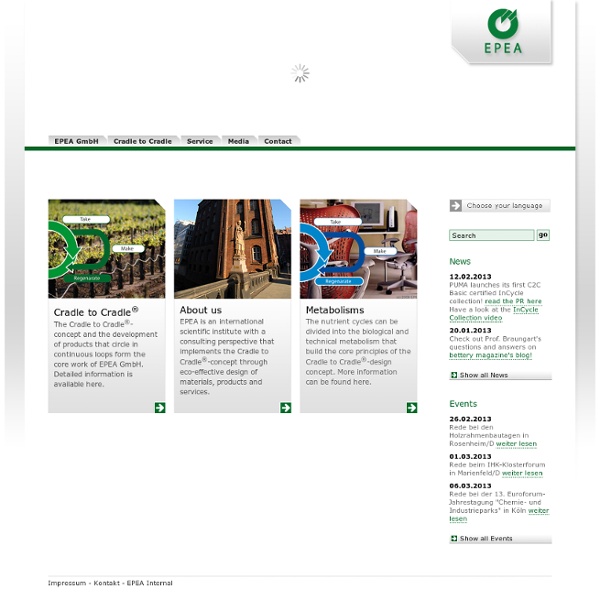Epea.com: Startseite

Cradle-to-Cradle Design and the Principles of Green Design
One of the most influential recent books on design and environmentalism.” —Alice Rawsthorn, The New York Times [McDonough] point[s] to a path out of the seemingly un-winnable trench war between conservation and commerce.” —James Surowiecki, The New Yorker A rare example of the ‘inspirational’ book that actually is.” —Steven Poole, The Guardian [McDonough and Braungart’s] ideas are bold, imaginative, and deserving of serious attention.” —Ben Ehrenreich, Mother Jones [A] clear, accessible manifesto . . . —Publishers Weekly A readable, provocative treatise that ‘gets outside the box’ in ahuge way. —Kirkus Reviews For those of us who have a hunger to know what the next great idea will be, this highly readable book captures and challenges the imagination.” —Sarah D. With this book, McDonough and Braungart open our eyes to the way to genuine sustainability by the study of nature and mimicking her ways. —Dr.
Cradle To Cradle Products Innovation Institute
William McDonough
Related:
Related:




"EPEA is an international scientific institute with a consulting perspective that implements the Cradle to Cradle®-concept through eco-effective design of materials, products and services." by feillet Jan 5